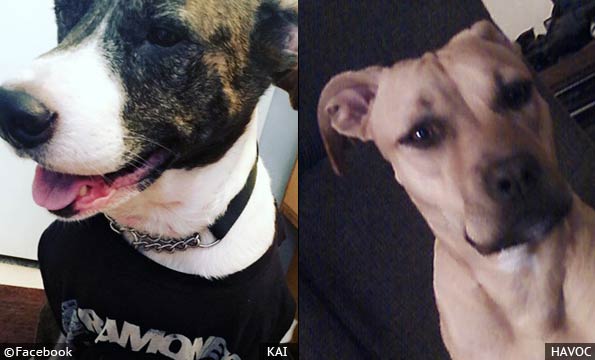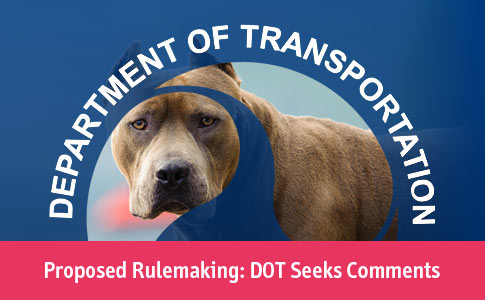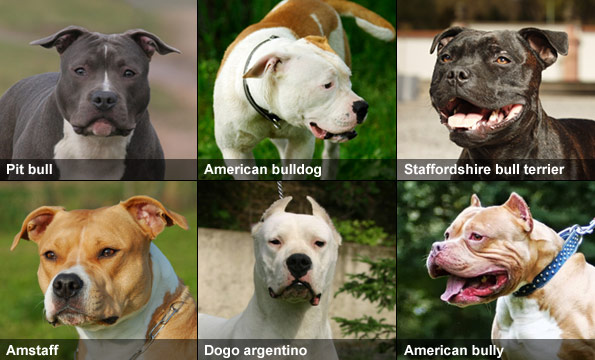Ventura County Animal Services Returned Dog After Earlier Attacks

Incident Overview
Ventura, CA - On July 2 of last summer, the Ventura County Star reported that a 54-year old woman was likely killed by her own two dogs. On July 10, we filed a Public Information Request with the Ventura County Medical Examiner's Office. By that time, we had already learned the victim's name and obtained photographs of the dogs from Facebook pages of family members. We had only been seeking cause and manner of death, but were approved for the full autopsy.
That was the first in a series of red flags that would follow. We received the autopsy report in September. Maria Crawford died of "dog bite wounds of the head, neck and leg," states the report. She suffered "severe facial bite lacerations with skin avulsion," lacerations through her eyes and nose, and a partially avulsed left ear. A large bite wound on the anterior neck caused "comminuted fracturing of the thyroid cartilage and hyoid bone" and perforated the left internal jugular vein.
Fracturing the hyoid bone is so rare, it accounts for only 0.002% of all fractures in humans. The most common cause of fracturing the hyoid is violent death by strangulation or hanging. Other causes include gunshot injury and car accidents. Crawford's death marks the third case we have on file of a pit bull crushing the thyroid cartilage and hyoid bone while killing a person. In all three cases, the bone was not fractured, but crushed (crushing injury) by the dog's powerful jaws.1
The attack that killed Crawford occurred on June 28, 2019. In the previous six months, the dog had targeted her face in two attacks, both requiring a treating physician and each injury escalating in severity. The first attack occurred on January 19, when the dog tore into her left cheek. The second attack occurred on March 19, when the dog fully severed her right ear. After both facial and head region attacks, Ventura County Animals Services (VCAS) returned the dog to the victim.
The fatal attack occurred in the 10600 block of Sunflower Street. Officers were dispatched to the home about 4:25 pm after a family member returned home and found Crawford dead. Authorities confiscated two dogs from the home, "Havoc," a female pit bull, and "Kai," a neutered pit bull-mix, but designated an "Australian Cattle Dog" in VCAS records. This was the third time "Kai" had been impounded for attacking Crawford, but the breed was never corrected in VCAS records.2
Kai was 81-pounds, twice the weight of a male cattle dog, part "brindle," a non-existent coat color in cattle dogs, and riddled with bully features.
According to family members, "Kai" was the culprit in all three attacks, the last one resulting in Crawford's death. After the second attack, when the dog severed her right ear, VCAS placed a caution sign on the dog's "double barrier kennel" while quarantined. At that time, Canine Adoption and Rescue League (CARL), who adopted the dog to Crawford in 2012, told VCAS they wanted the dog back. CARL claimed they could "retrain the dog" and possibly return it to the family.
Again, this was after two escalating owner-directed attacks targeting the victim's head. Two days after Kai ripped off her ear, Crawford called VCAS and stated "this has all been a terrible mistake" and that she wanted Kai back. The dog was returned to her on March 25. Technically, both Kai and Havoc belonged to one of Crawford's two adult daughters, who apparently resided at the home, along with Crawford's husband. Three months later, the dog brutally killed Crawford.
Note: Shelters are now in the position of having to protect family members from their own vicious dogs. We recently wrote about a shelter attack in Oakland County Michigan. After a family pit bull attacked a mother and her two children, sending all three to the hospital, the mother demanded the dog back. This forced the county to hold the dog in quarantine while the county sought a show-cause hearing. Four days before the hearing, the dog viciously attacked a shelter supervisor.
The June 28 bite report states, "Owner was killed by dog." Havoc was released back to its owner, Alyssa Crawford, on July 18. VCAS released Havoc -- exonerated in part due to complex overlapping bite injuries and both dogs having similar teeth measurements -- with a signed letter of indemnity freeing the county of any future liability claim. The letter also ordered Havoc to be muzzled when off-property and kept separated or muzzled when in the presence of a minor.
This was an unwitnessed fatal dog attack inside a multi-dog household where both dogs had access to the victim. If no clear evidence exists to exclude a dog, it must be included as a suspect to protect public safety. In this case, "neither dog could be excluded based on the bite marks alone," states the autopsy report. Havoc was excluded because a photograph taken of the dog at the crime scene did not show blood on its coat. Havoc should not have been released.
Havoc was a biter with a "good grip." In a 2013 public post, Alyssa said her female attacked Kai, leaving a "gaping hole" that required staples.3
In addition to the fatal neck injuries inflicted by Kai, one or both dogs attacked her right leg just above the ankle, inflicting seven severe bite wounds. Crawford also suffered multiple puncture wounds on her hands and fingers. A multi-dog attack often involves one dog biting the head or upper body region and the other biting a lower extremity while both dogs jerk and pull in opposite directions. Lacking blood on the coat does not equate to being a non-participant in the attack.4
Attempts to Return Kai
Just two days after her mother's brutal mauling death, Alyssa inquires about the fate of both dogs to VCAS. Three days later, her sister Lauren does too, claiming that she was Kai's original owner. Lauren could not tolerate the idea that her "boo boo" was "wasting away in his kennel waiting to be euthanized." On July 16, Alyssa told VCAS that CARL had "set up a sanctuary" for Kai to go to so the dog could live out "the rest of his days there." The family did not want Kai put down.
By July 26, a private attorney, Lara Shapiro, became involved on behalf of both daughters. VCAS informed the attorney, who was referred to the case by the Animal Legal Defense Fund (ADLF), the county would not voluntarily release the dog due to the extremely severe nature of the attack. If the family failed to surrender the dog to VCAS on July 29, Kai's scheduled euthanasia date, the county would seek a hearing to have Kai declared dangerous and ordered to be euthanized.
On July 27, attorney Marc Colen wrote to VCAS stating he would be "filing opposition to the euthanasia of the cattle dog mix" in your control. Colen was working in tandem with CARL, and at this desperate hour, CARL had to add the "mix" language to even properly identify Kai as the dog. When VCAS informed Colen that this dog had attacked and killed its owner, Colen was stunned and taken aback. CARL had not even told this attorney why Kai was being held for euthanasia.
Ultimately, Crawford's husband agreed to surrender the fatal attacker and signed the papers on July 29. Kai was euthanized that same day.
Summary and Analysis
In 2019 alone, four women, ages 41 to 54 years old, were brutally killed by family dogs that had previously attacked them. Brandy Boschen-O'Dell told people the injury was from a "box-cutter." Nancy Burgess-Dismuke had been attacked by one of her boxers five times before it killed her. Yet, no case is as egregious as Crawford's. All household members knew about the first two severe attacks, VCAS staff knew, as did CARL. The third attack was Crawford's death sentence.
A third attack "to the head" was a foreseeable outcome. The 81-pound dog had escalating owner-directed aggression targeting the owner's face. No one in the victim's home was qualified to handle that dog, but VCAS returned it anyway. It should not have been a choice for Crawford to get the dog back. Animal control agencies need to look at "hard targeted bites" to the head, neck or trunk inflicted by family dogs on children and adults as predictive of future severe attacks.
Shelter policies must also adapt to the "new norm" of families fighting to keep vicious dogs that have already mutilated a household member.
There were no documented witnesses other than Crawford to any of the attacks, but family members claimed the last two were provoked and that Kai was only "defending himself." VCAS redacted the provocation sections in the records we obtained. VCAS did tell Crawford after the second attack that "We need to make sure [Crawford] is safe, and we need to make sure the dog will be safe." VCAS could not do so, the family would not do so and the results were disastrous.
Lastly, concerning the invalid breed labeling of Kai in VCAS records. It's either incompetence or deliberate fraud by Ventura County Animal Services. They had quarantined that dog three separate times in a 6-month period, the final time for 30 days. Even family members called the dogs pit bull-mixes. One day prior to the fatal attack, the victim's husband publicly called the pair of dogs "elderly pit bull-mixes." The owner, Alyssa, then made a joke about Havoc biting him.5

Both dogs seen on public Facebook pages of family members: Kai, 2018 and Havoc, 2011.
2Quarantine dates include, intake 01/23/19 and release 2/01/19; intake 3/20/19 and release 3/25/19; and intake 6/28/19 and euthanized 7/29/19, according to records we obtained from Ventura County Animal Services.
3Havoc attacked Kai about a year after the family adopted Kai. Notably, "grip" is a term most often used in bite work. In a comment on her 2013 post, she writes, "Kai was trying to make her stop by 'herding' her and she bit him on the side. She has a good grip, unfortunately." Then she quickly corrected her use of "grip" with: "Well jk she didn't GRIP him, I mean she has a good snap?" She also wrote a post about "irresponsible dog owners" that year.
4There are many attacks that illustrate how a two-dog attack involves the head or neck and a lower extremity (tug-of-war effect). Even more damning is that the male (such as Kai) is often the more confident aggressor, attacking the head, while the less confident female (such as Havoc) attacks the foot. That said, Kai was perfectly capable of attacking Crawford in multiple locations too, but had previously only targeted her face and head for serious injuries. Given that teeth measurements for both dogs were similar (indistinguishable) and that blood loss on the lower leg injury could have been minor, the assumption should have fallen on the side of public safety. Instead, VCAS, under the management of Jackie Rose, returned a dog, possibly involved in a fatal attack on a family member, to that same family. Ventura County covered their ass with a "letter of indemnity" as well, which speaks volumes about their confidence in this dog. Notably, Rose was hired by Ventura County in April of 2019 -- between the second and third attacks. At that time, Rose was close to being ousted as director of Multnomah County Animal Services, which was immersed in scandal, in part due to the "continued adopting-out of overaggressive or dangerous dogs." Deputy Director Donna Gillesby was the only top management at VCAS involved in both decisions to release Kai back to the family after the second severe attack and to release Havoc back to the family after the fatal mauling.
5On this date, June 27, one day before the deadly attack, Crawford had already been mauled in the face twice, leaving scarring. The dog had amputated her right ear too, presumably leaving quite disfiguring scarring. The only appropriate context for a "dog joke" at this time is what the husband wrote, who implied in his joke that maybe it was time to give away the family's two pit bull-mixes. Alyssa immediately responded: "RUDE. I'm telling [the dogs] you said that, maybe Havoc will bite you in the arse!" Once again, referring to Havoc as the biter in the household.
Related articles:
12/30/19: CA Hits Record High in Fatal Dog Attacks in 2019 -- Are Animal Control Policies Protecting Us?
Law enforcement departments across the United States should release consistent "baseline" information to the media and the public after each fatal dog mauling, including these items.







